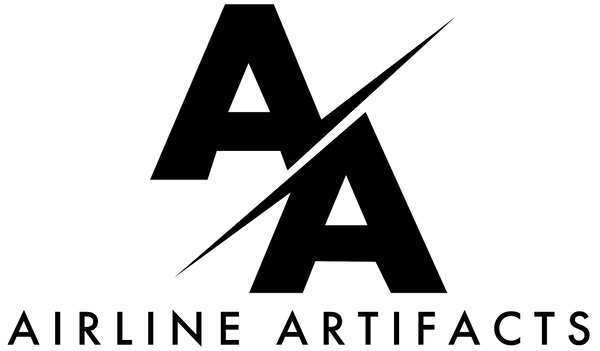Every disassembly project tells its own story. As trim is demounted and passenger seats are removed, echoes of travels past come out of hiding. Old menus. A customs arrival card, partially scrawled. A jammed atlas box. A torn playing card.
Occasionally we find operational gems, too. In EBU's case, cleanup of the cockpit included emptying of the wastepaper bins. Crumpled within the operational documents of the final flight were patiently waiting. So, we saved them. The collection includes the flight plan, navigation log, weather reports and forecasts, loads and performance for QFA6195, departing Sydney for Avalon, 1st February 2005.
One of the more remarkable things we were also able to do, as a result of finding these operational documents, was to track down the Captain of the final flight and speak with him about this seemingly uneventful ferry flight.
Captain Steven Wright was able to share these picture with us, taken on the final flight. He noted that it was a seemingly routine ferry flight, completed in business attire and no passengers. He also noted that the final block time of 1 hour and 58 minutes was longer than usual - we can only presume this was down to the strong winds and a long taxi to runway 34L and a long backtrack after landing on runway 18 (more on this below). Captain Wright was kind enough to share some picture he took with his crew on the final flight. Below is Captain Wright during the ferry flight in EBU, along with the flight deck as it was left by the crew on that day in February 2005. If you look closely, you can also see pictured another 747 undergoing maintenance in the hangar.

On the day you can see that the crew were presented with a small list of defects, allowed to be as such under the aircrafts Minimum Equipment List (MEL). We can also see the Sydney aerodrome weather (ATIS) issued by ATC from the time of departure as hand-written by the crew; information Sierra utilizing runway 34L and 34R with a north-easterly breeze of 15-20 knots (mainly all crosswind), Few clouds at 2500FT, a temperature of 28 degrees celcius and a QNH of 1005.

|
 |
Captain Wright had remarked to us that he remembers doing a near full-power takeoff out of Sydney (despite being very light) and that was indeed confirmed with the Takeoff and Landing Data (TOLD) card which we also recovered from the bin. As much detail as the rotate speed for the final ever flight of this aeroplane can be seen; 144 kts.

Approaching Avalon the crew were able to receive the latest weather via ACARS (a VHF based text communication service). The weather was a fairly strong southerly breeze, which ended up increasing to 27 knots as the crew approach runway 18 for EBU's final landing.

As the crew bid Farewell to EBU, Captain Wright snapped a quick photo of the flight deck as they left it, and then his Flight Engineer (name unknown) is pictured here next to the taxi to take them back to Tullamarine, then home to Sydney.

|
 |
In addition to what we've shown you, the original Operational Fight Plan (OFP) and Weather Pack was recovered and shows the dispatched and final fuel figures and aircraft weights, the cruise winds at each waypoint and the navigation log (including the hand-ritten revised ETAs for each waypoint once the aircraft had departed). The Weather Pack continues to tell the story of a classic Melbourne day - a stiff morning Notherly breeze, followed by a midday cool change, cold front and associated south-westerly wind, cloud rain getting worse into the evening.
These documents are a nifty operational time-capsule of EBU's last outing. We've scanned these and are pleased to share them with you all today.

